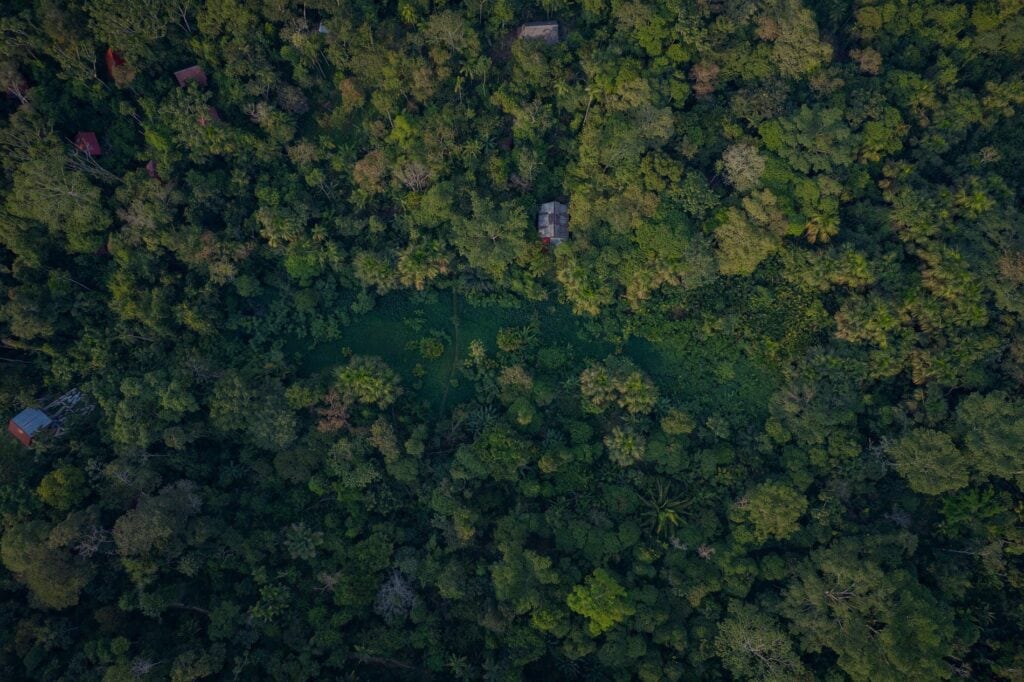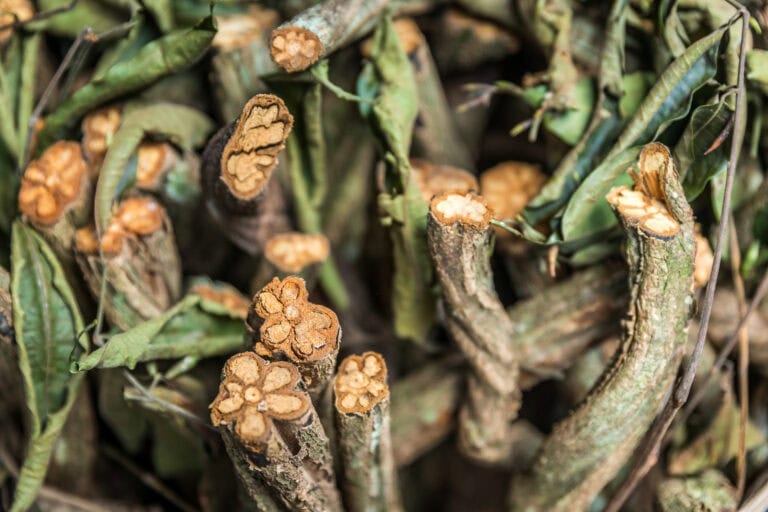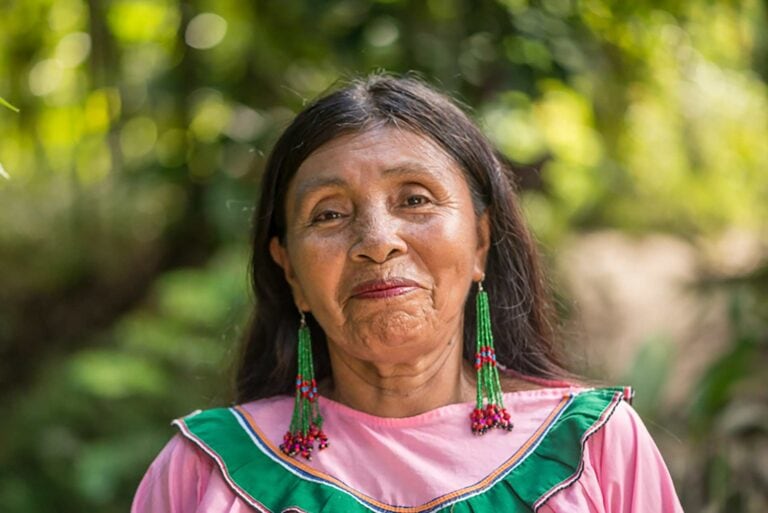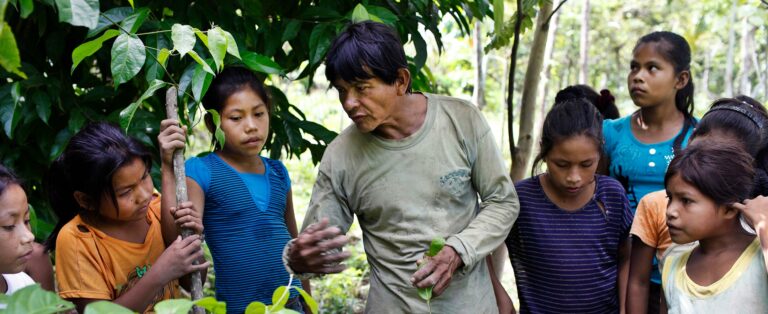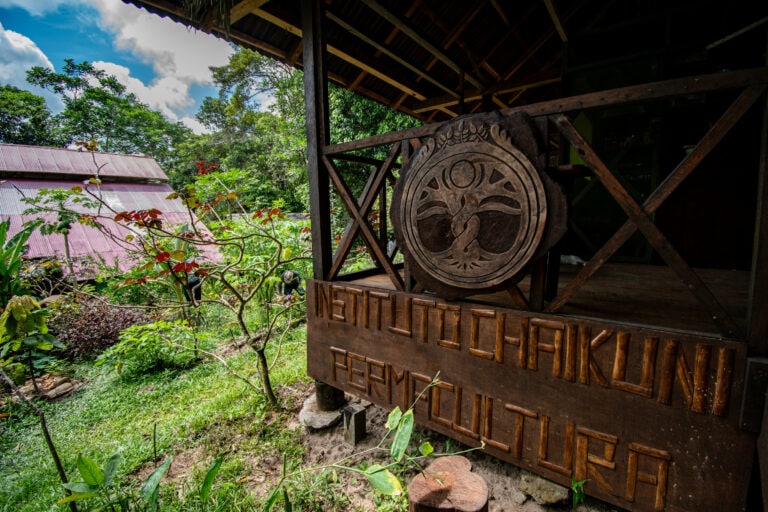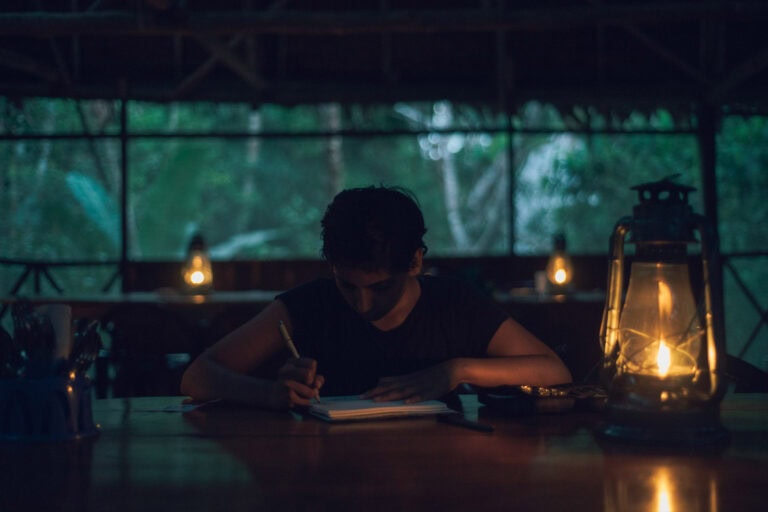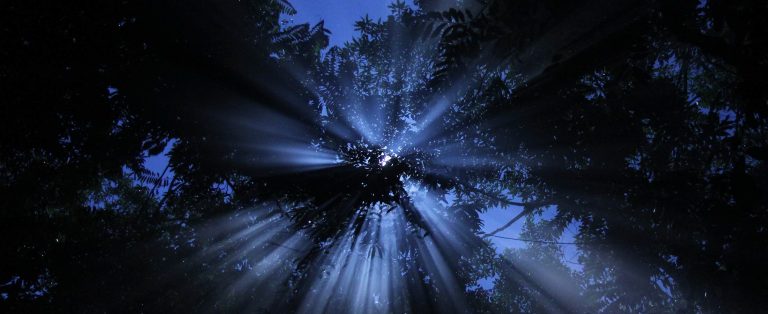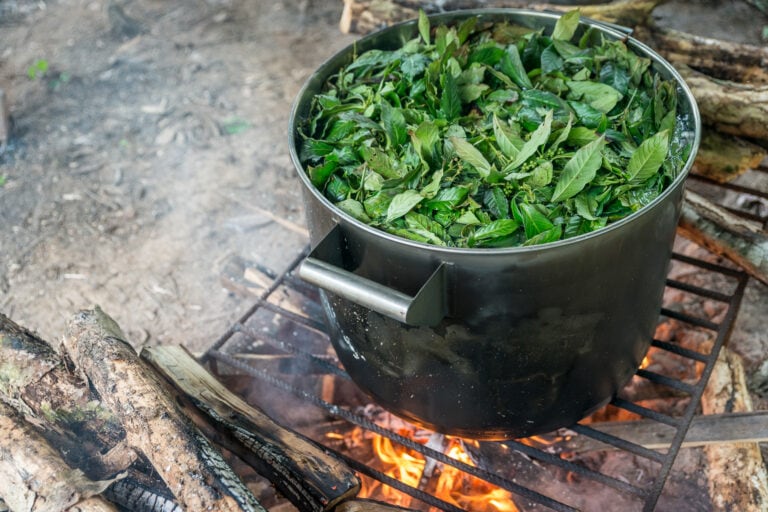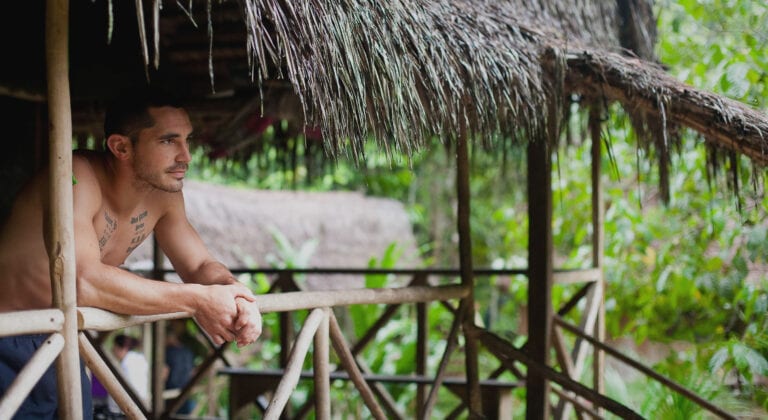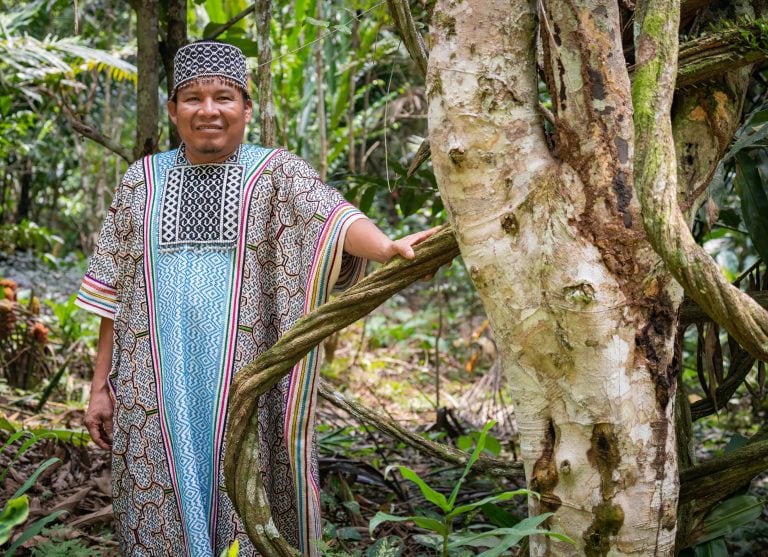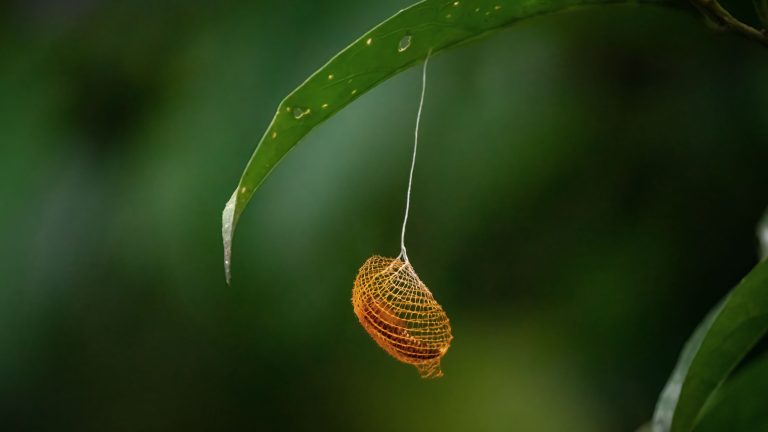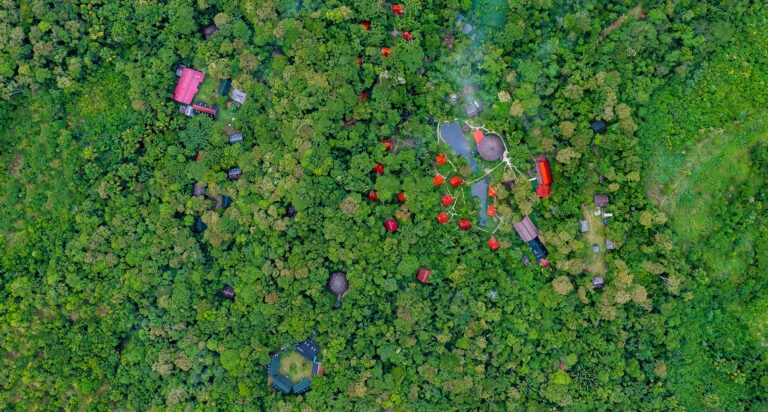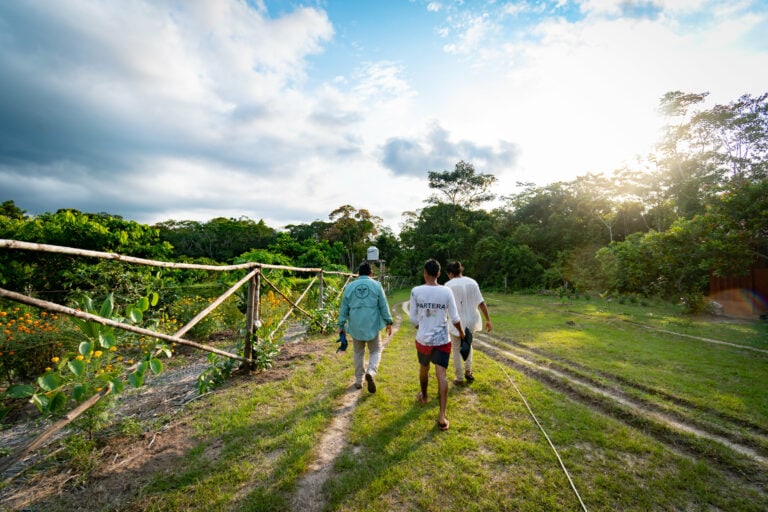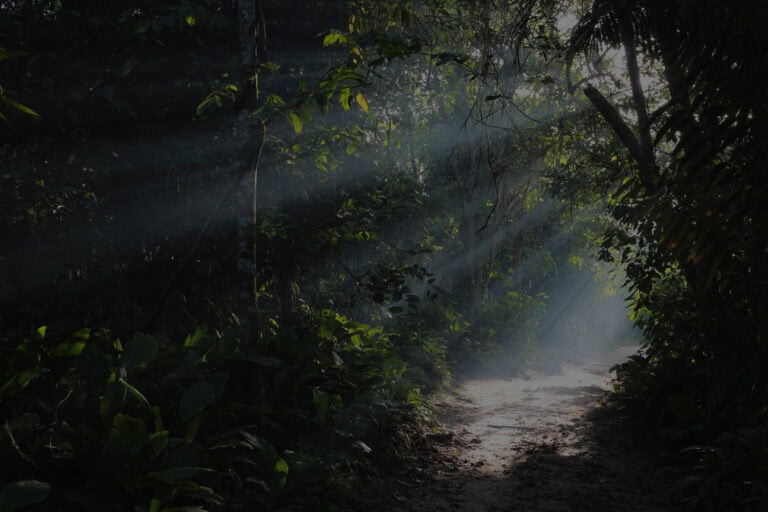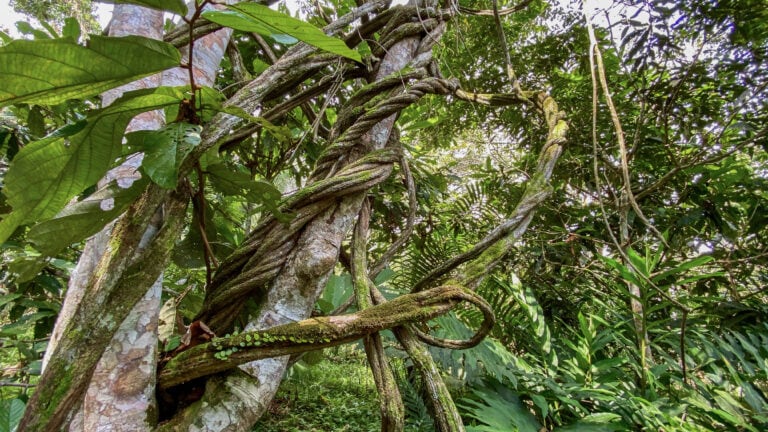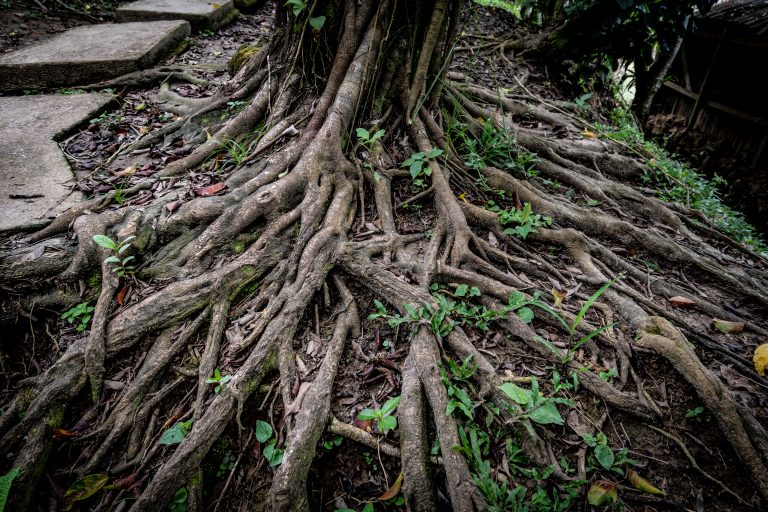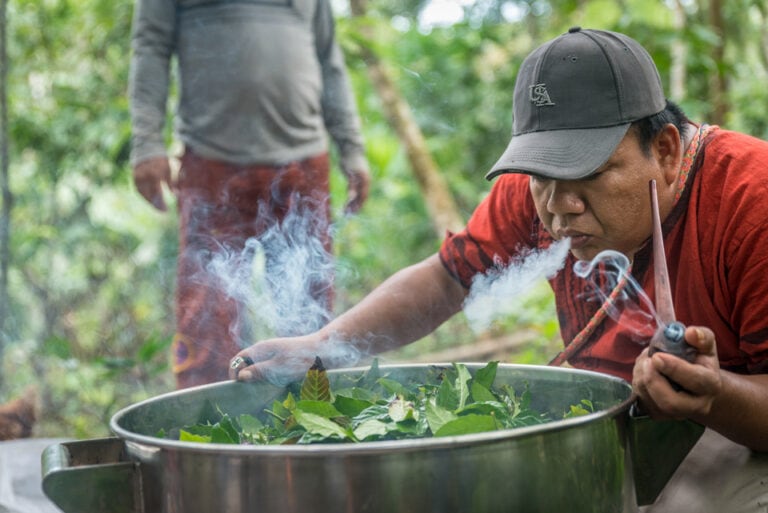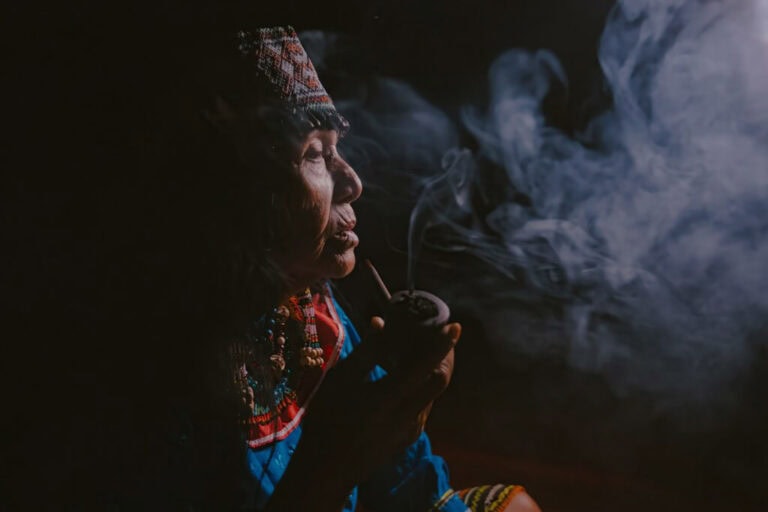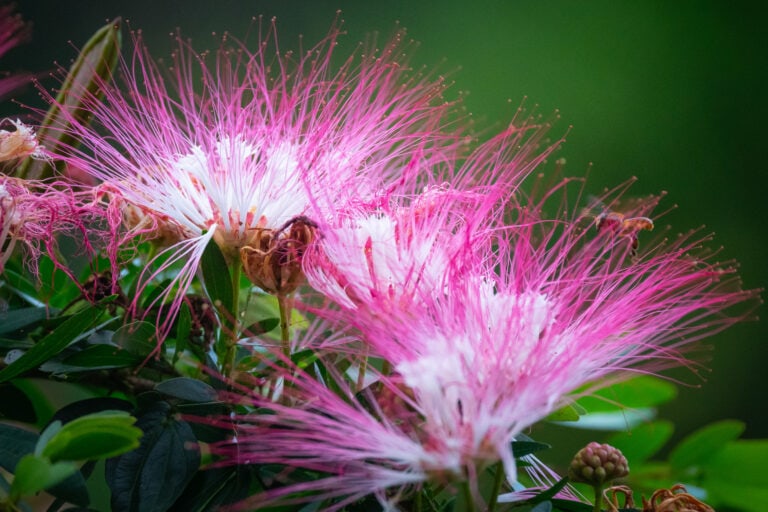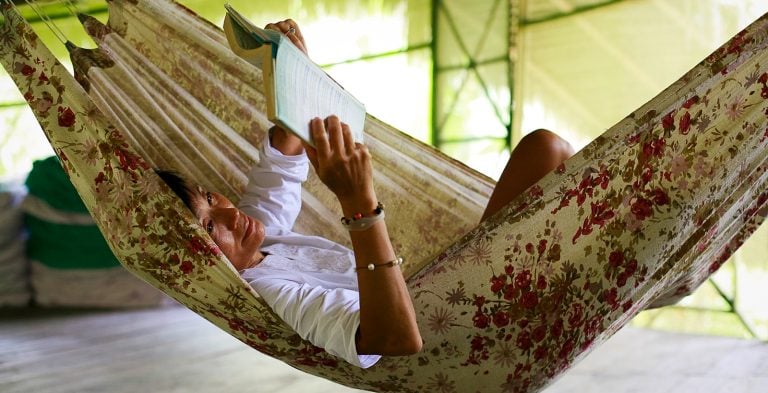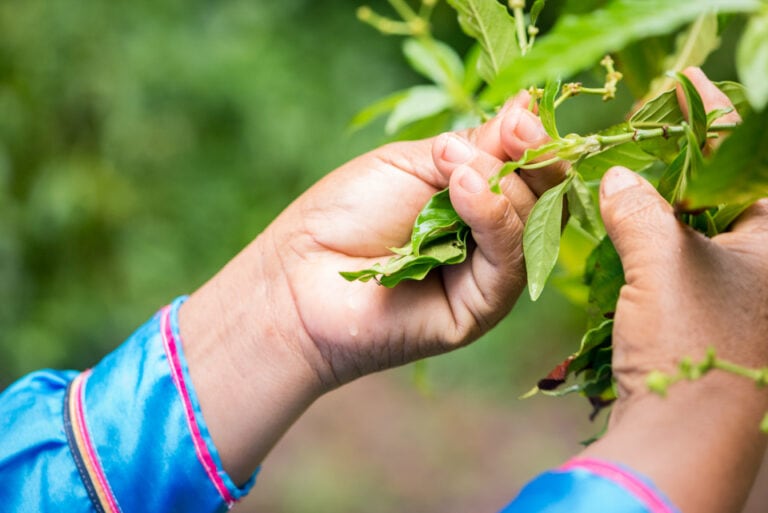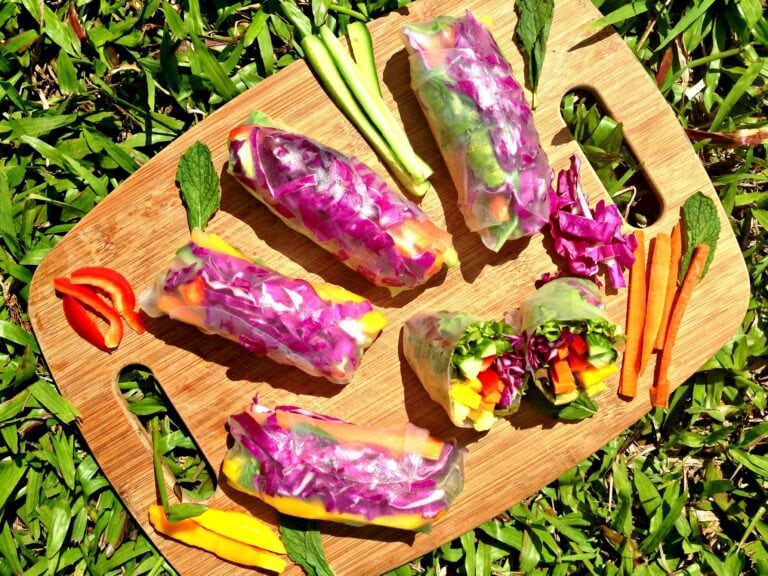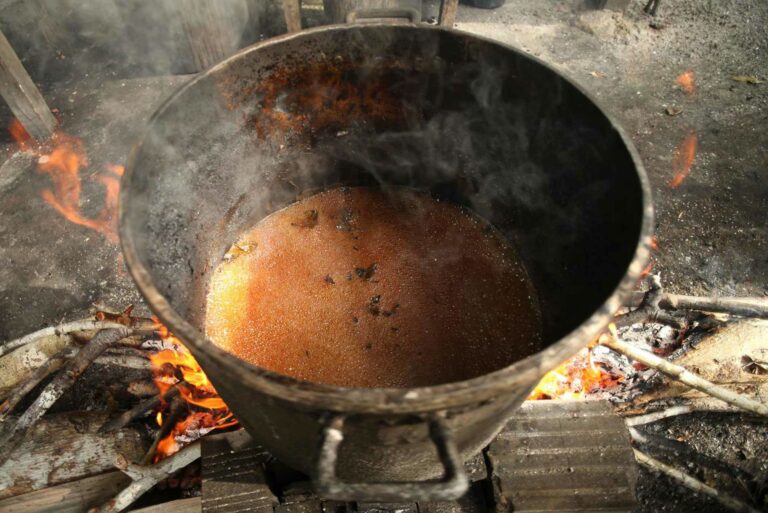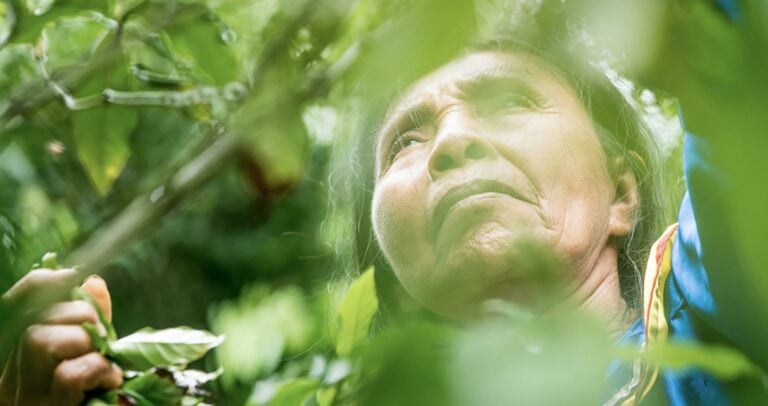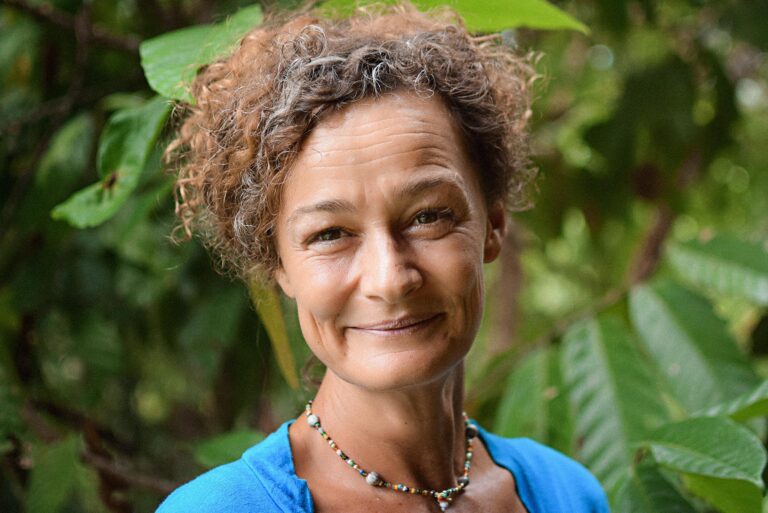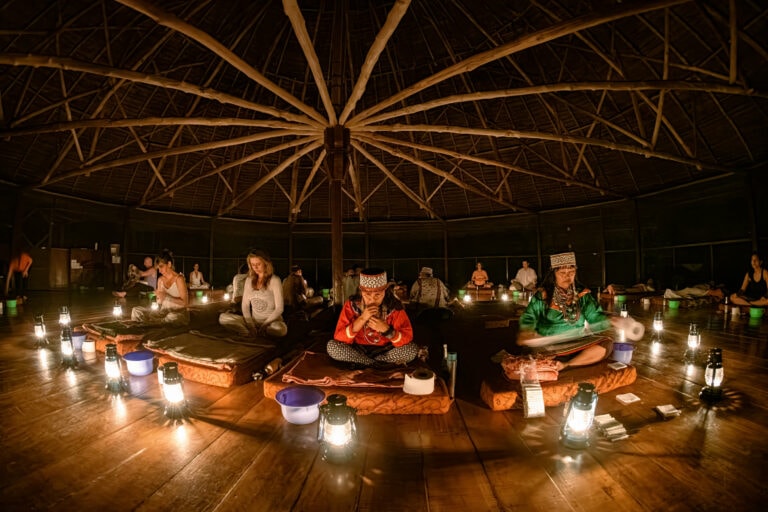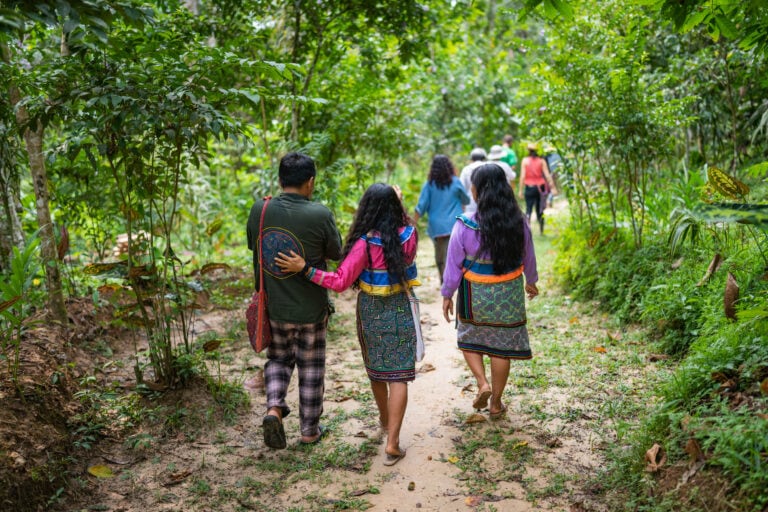The Temple has become a self-sufficient producer of ayahuasca, modelling a responsible and regenerative ayahuasca production method for this sacred medicine through incorporating the ayahuasca vine (Banisteriopsis caapi) into our agroforestry systems on the Temple’s 300-hectare property.
Our efforts seek to counter the trend of the over-harvesting of ayahuasca in some locations in the Amazon and the devastating effects of industrial development and agricultural practices that undermine the forest ecosystem in which this plant medicine grows.
Together with our sister non-profit organization, the Chaikuni Institute, we launched an important initiative called ‘Ayni Ayahuasca’ back in 2018.
We promote regenerative cultivation of banisteriopsis caapi, the ayahuasca vine, as an integral part of the local farming systems, counteracting the overexploitation of the vine, generating vital income for local families, and helping to conserve the source and supply of this ancient medicine.
Unlike other cash crops in the region, ayahuasca is significantly more valuable and easier to sell in the local marketplace. Planting trees together with ayahuasca can offer lucrative, long-term solutions for Amazonian families while revitalizing degraded landscapes, stimulating carbon drawdown, and supporting biodiversity, preserving this sacred medicine and ensuring a healthy ayahuasca population in the region.
We have planted over 1,800 vines around the Temple property. We hope to increase production three-fold over the coming years.
Ayahuasca takes at least 10 years to grow in natural conditions to be ready for harvest and cook into ayahuasca tea. The first five years are typically a relatively slow growth stage due to the young vine needing to grow to a sufficient height to reach the canopy and be immersed in regular sunlight.
Sustainable harvesting of ayahuasca simply means cutting off sections of the branches and leaving the roots intact. We also have some very large ayahuasca vines growing at the Temple that are now more than 15 years old which we are preserving and using as demonstrations of mature vines to show guests on retreats.
Our ayahuasca production is part of the Temple’s broader mission to develop regenerative living systems that are self-sufficient and also give back to the land.

Our regenerative ayahuasca production efforts are fundamentally supported by traditional understandings of the numerous varieties and growth stages of Banisteriopsis caapi and where it grows under optimum conditions. We are committed to participating in further research into the impact of ayahuasca production on the local ecology and how to protect the plants from external environmental threats.
In addition, we have been experimenting with growing chacruna (Psychotria viridis), the medium-sized leafy shrub that is combined with Banisteriopsis caapi to make ayahuasca medicine. Most of the soil around the Temple is not optimal for the production of chacruna due to its high sand content.
In 2014, we discovered an area on our property where chacruna grows well and have focused our efforts on planting many young chacruna plants in this section of the local forest. Working with local experts, we have also learned that chacruna is traditionally cultivated alongside yarina – an ivory palm (Phytelephas macrocarpa) that is commonly used for roofing in local communities.
It was by observing and then mimicking the growth and diversity patterns found in the surrounding rainforest that we identified the ideal conditions and locations within the layers of the ecosystem for the production of our ayahuasca vines and chacruna plants. We constantly monitor the effects of our work and the ‘feedback’ from nature ultimately informs our plans for further expansion of this important initiative.
By following these permaculture principles, the Temple is ensuring that our local stocks of both ayahuasca and chacruna are cultivated successfully, harvested sustainably, and with the utmost respect to the surrounding rainforest eco-system.

Components of Sustainability
One of the key practices of permaculture is respecting the symbiotic relationship between the parts and the whole. The Temple understands that our ayahuasca production takes place in a context of cultural and economic sustainability in the broader region.
We believe sustainable production must benefit both local communities and our guests, and ensure this potent healing medicine is available for all who wish to approach it with respect for the healing traditions from which its usage has emerged.
We are also alert to both the positive and negative implications of the growing interest in ayahuasca healing in the Amazon. At its best, the demand from Western visitors can benefit local communities and shamans. At its least helpful, commercialization can compromise the integrity of the traditional usage of ayahuasca.

The other significant economic concern is the exploitation of ethnobotanicals in the Amazon. The Temple recognizes traditional knowledge-holders’ rights to benefit from the sale and use of traditional medicines such as ayahuasca, while still ensuring that local people can access plant materials at affordable prices.
To date, multinational pharmaceuticals have reaped most of the economic benefits of their bio-prospecting, despite being guided by ancestral knowledge and countless years of tradition.
We support the model put forward by the Nagoya Protocol of 2010 that requires companies to gain prior and informed consent from governments and traditional knowledge-holders before seeking to sell new ethnobotanicals, and ensuring access to, and profit-sharing with, traditional knowledge-holders.
The Temple further promotes research that validates traditional knowledge-holder intellectual property. We serve as a model for regenerative ayahuasca production through locally-owned eco-social enterprises, ensuring that all Amazonian peoples benefit from the use of their medicine.
We are dedicated to operating with total social responsibility within a reciprocal relationship with the environment and our local communities.

